For the last few months, I’ve been beta testing Pixii – a new smartphone-connected, 12 megapixel, APS-C format, screen-less digital rangefinder camera that will be hitting the market in the not too distant future… so thought it about time I published a few thoughts on the thing.
Around the time it lands, I intend to put out a more full review. In the meanwhile, I thought I’d post a bit of an introduction to this uncommonly-niche camera and talk a bit about what has been quite an exciting experience of being involved in the pre-launch testing of a new camera.
Back in 2018, the Pixii digital rangefinder was announced. There was what felt like a brief flurry of press around it, but with information being quite sparse, and a little bit of murmuring on social media that it looked like vapourware, before long it seemed to disappear.
I suspect some thought it would disappear for good – in fact, I’ve read from a few people who tend to be fairly well informed about this sort of thing that they thought it had. Concepts like this appear from time to time but often come to nothing. It seems to have been the consensus that this was one of those concepts – but actually that wasn’t the case at all. David and the Pixii team were just beavering away behind the scenes and – since bringing a new camera to market isn’t the easiest thing in the world to do – it’s just taken a bit of time.
When I first saw Pixii I was equally as excited as I was frustrated. I was very intrigued by the concept and had hoped it would come to life, but couldn’t find enough information to satisfy my intrigue. I also wanted desperately to get across to this start-up manufacturer that I would be extremely interested in reviewing the camera as soon as it was available. It was, on paper, an extremely interesting concept to me. It also looked like it would fit in with many of the design ideals I have waffled on about on this website so frequently over the years. It doesn’t have loads of buttons, the interface looks super-simple, and well, just look at it! It’s a really very attractive bit of industrial design. All stuff that ticks my boxes.
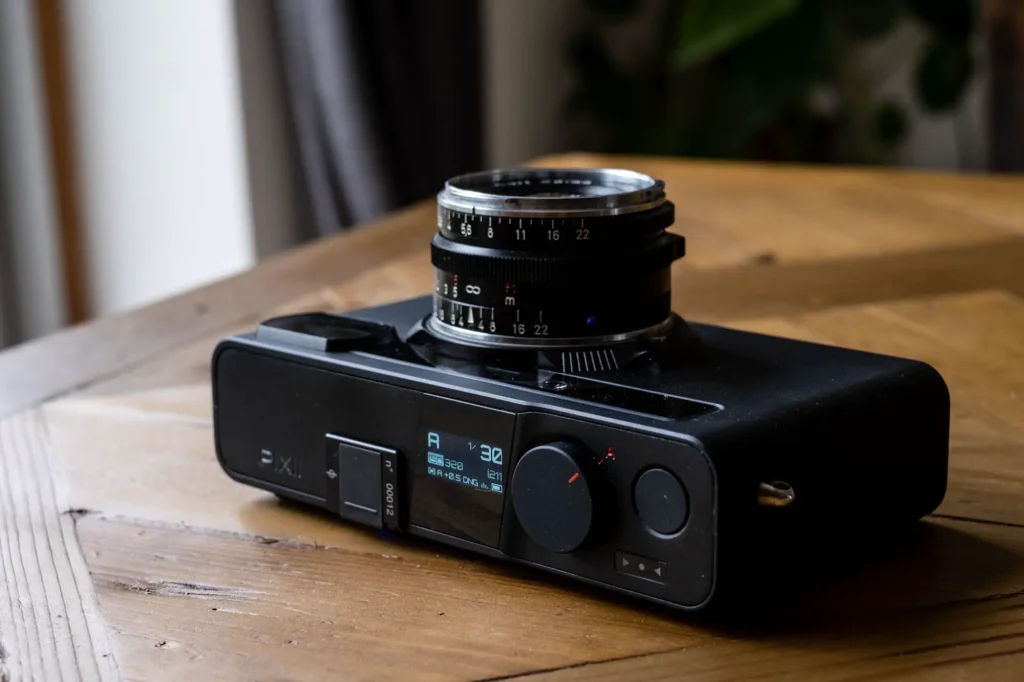
Something Different
Beyond all that though, the thing that really tickled my fancy was that it’s something different from the crowd. The homogenisation of camera equipment bores me to tears. It’s one of the reasons I write a lot more about film cameras than I do modern digital ones. With film cameras, there’s decades of variance to enjoy, many paths of innovation to follow (or not) and explore.
These days, most of the brands just fight for the same market as each other. Most brands primary goal seems to me to be to create the ideal camera for every possible user. The result is cameras that are bloated with unnecessary features and modes that bring very little advantage to the average individual but make sure the target audience is as broad as possible.
This is why I enjoy Leica cameras and respect Fuji for bringing cameras like the X-Pro3 with its weird niche-audience screen to the market. That said, even Fuji fall foul of bloating their cameras with stuff most people don’t need. In the digital camera marketplace – unless you start looking at brands like Hasselblad and Phase One – Leica and Sigma are really the only more mainstream brands who target a niche market with the majority of their digital cameras.
Enter Pixii
Which is exactly why I was so excited by the Pixii concept. Not only was it a niche product, but it looked to be a niche product that would appeal to me. Of course, like most people who contacted Pixii with review requests at the time of the initial announcement, I heard very little back. I had some confirmation on Twitter that the project was at least going ahead, but beyond that. Nothing. So how, you might ask, have I ended up with one in my possession for a couple of months?
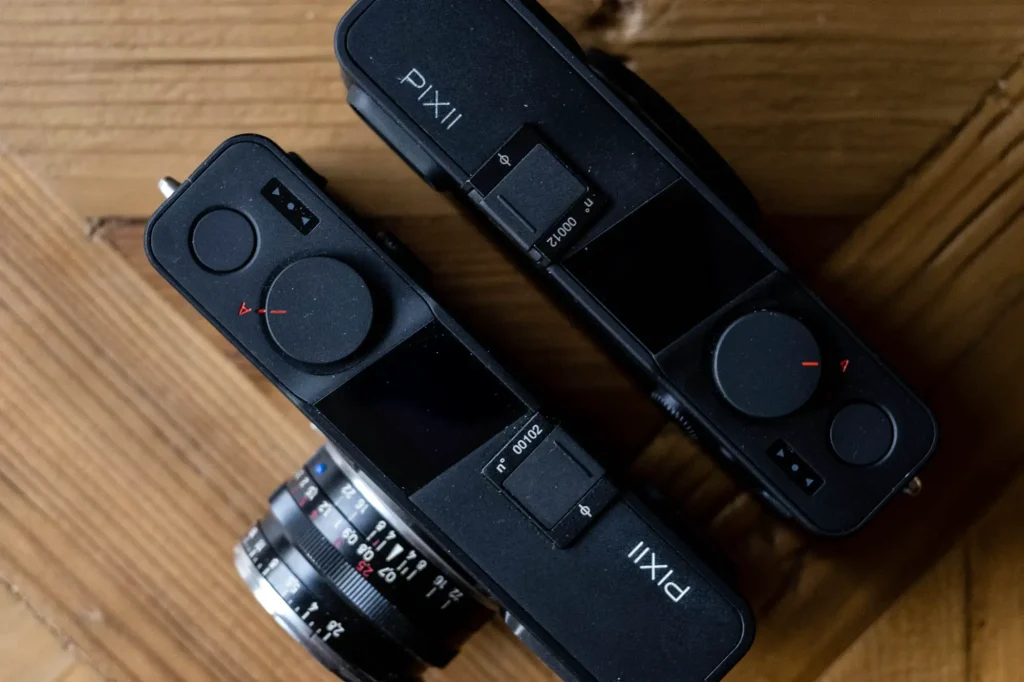
Pixii in my life
Back in March, I had a call from a French-sounding man who introduced himself as David Barth from Pixii camera. He wanted to know if I would be interested in testing a late preproduction camera. My very quick response was a resounding “Yes!! – but why me?”
David had been reading this website, and in particular, had recently re-read my Leica M8 review. That review had rounded off his opinion that I would be a bit of a soft landing for the camera. Up until then, it had been tested by investors and friends of the project. David wanted to fresh eyes on the camera but wanted to put it in the hands of someone who would get Pixii as a concept. He was at the stage that he needed new opinions, but still needed opinions from someone who was at least what he saw as the target audience for it as a camera. He found me. I was obviously very happy to oblige. A very short amount of time later I had a Pixii in my hands.
What is Pixii (and what is it not)
I will get to first impressions and thoughts on the more subjective successes/failures/pros/cons of this Pixii in my next post. For now, I just want to outline exactly what this camera is and who it’s aimed at… because really – even including Leicas – there is nothing like it on the market. Not in my opinion anyway.
Pixii is a digital rangefinder
Ok, so first things first, this camera is a digital rangefinder camera. It has a 12 megapixel APS-C 1.5x crop format sensor, a Leica M-Mount (with the standard flange back distance) and is focused using a rangefinder.
It has frame lines for 28mm, 35mm, 40mm and 50mm lenses that show individually (with an indicator for which one is in use) inside the viewfinder alongside a basic 3 LED light meter readout and a rangefinder patch. Nothing else is visible in the viewfinder.
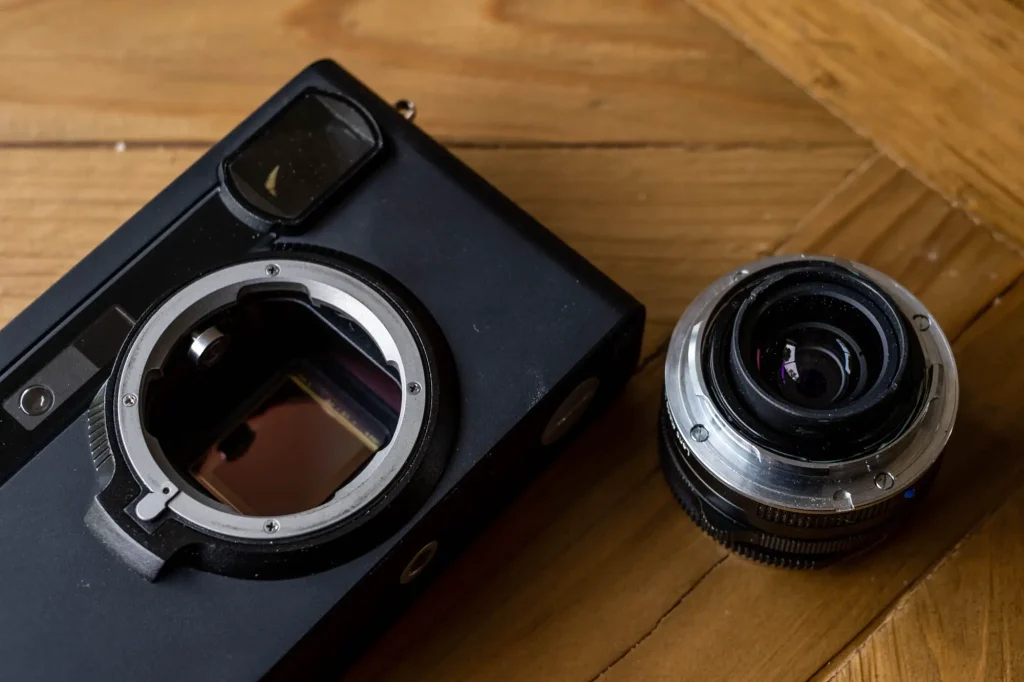
Pixii is not an alternative to a Leica
Pixii is not simply an alternative option for someone looking for a digital Leica. Some used digital Leicas can be had cheaper, they all have bigger sensors, and – but for the M8 – are all higher resolution and are higher performing in low light/higher ISOs
As such, in short, if you are just looking for a digital Leica, you should probably buy a digital Leica. If you’re looking for something a little more unusual with a slightly different use case, then read on… (I will come back to these thoughts at the end of this article)
It doesn’t have a preview screen
Unlike the massive majority of digital cameras on the market today, Pixii doesn’t have a screen on the back of the camera.
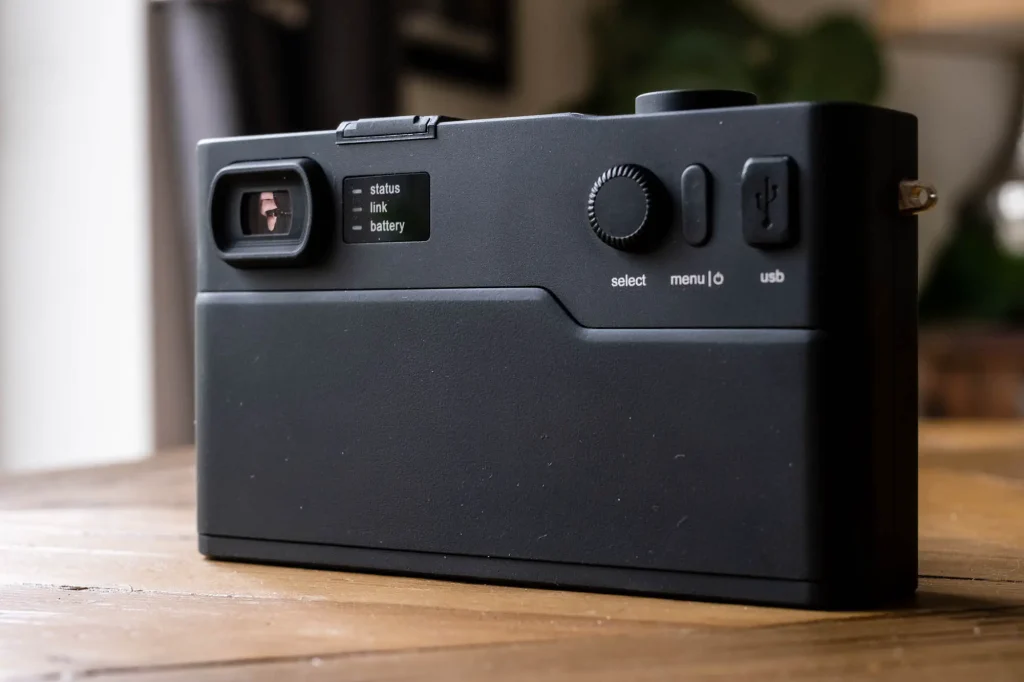
It’s a smartphone-connected camera
Rather than relying on a screen on the camera, if you so desire, you can still check your image previews via the smartphone app.
Once the app is open and the camera on and connected via Bluetooth, you can put the phone back in your pocket and even if it goes to sleep, the camera will continue to beam previews to the phone.
Even with the app, there is no live view functionality. The app’s main functions are changing the camera settings, previewing images, syncing high-quality images to the smartphone and updating the camera’s firmware.
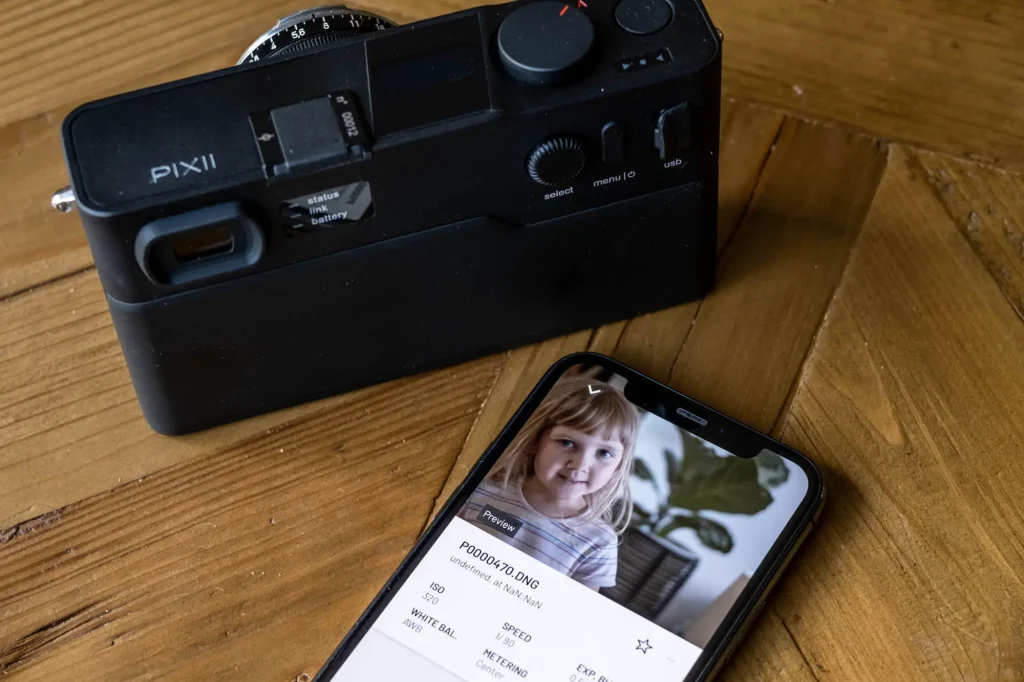
Pixii works with and without the app
All of the functionality that’s required when shooting is accessible via the little screen on the top of the camera.
On the back of the camera there is a small dial and menu (/on/off button). Press the button to enter the menu, then scroll through the menu using the dial and activating or deactivating modes with the button.
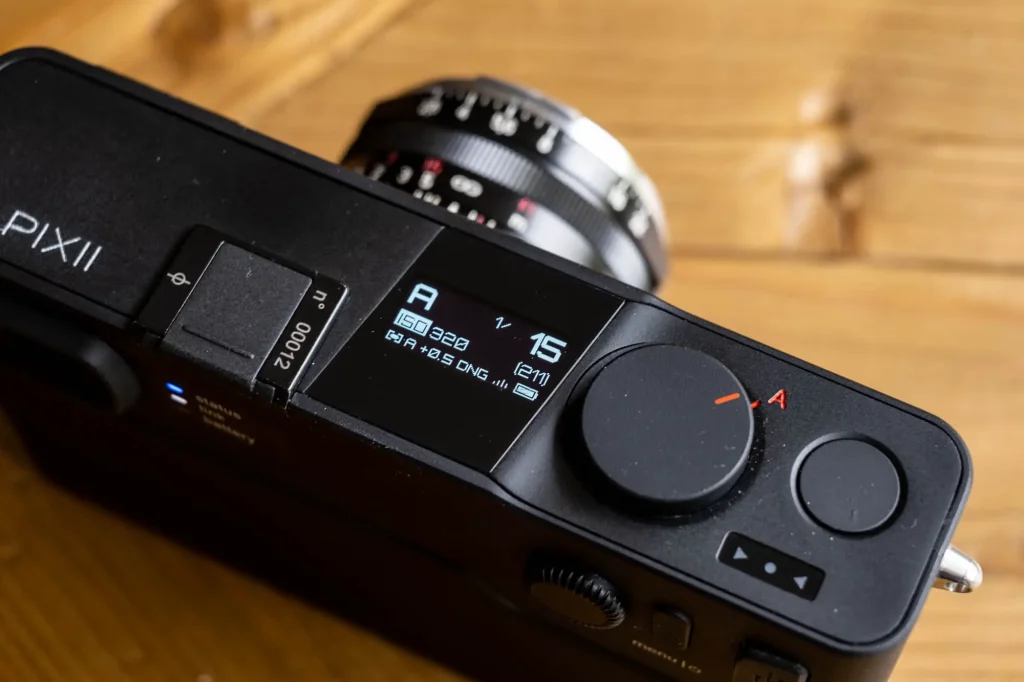
Modes and options can also be changed via the app. The app can also be used to update the camera, and change connectivity settings, but it’s not needed whilst taking photos if the photographer wishes to shoot without previews.
It’s an entirely electronic camera
Apart from the rangefinder, Pixii has no mechanical parts. The shutter is a global electronic shutter. The dials and shutter button are electronic switches.
It has a relatively small internal memory
The Pixii I have has about 4GB of internal memory, but with the sensor being 12mp, it still holds ~200-250.
It’s an intentionally simplistic camera
Pixii has the least modes and options of any digital camera I can remember using. In terms of photographic options it allows the setting of:
Shutter speed
The shutter is controlled by the dial on the top of the camera. It has a global electronic shutter with a range from. 2 sec – 1/32000th. This high shutter speed allows faster lenses to be used in brighter light without an ND filter.
ISO
Pixii has a very limited range of ISO speeds available: 320, 640, 1250, 2500. High ISOs are quite noisy, and certainly a fair way behind modern standards. In talking to David about this, he told me that ISO is quite a big topic, that the camera currently only relies on the hardware-based gain options, whereas cameras now use software to extend that and deal with noise aspects. He also suggested that they will be tackling more of this in future software updates. Regardless, for now, 320, 640, 1250, 2500 are the options, and the higher ISOs are quite noisy.
Low ISOs, on the other hand, are clean and crisp (especially with the Zeiss 35mm 2.8 ZM Biogon I have been using it with).
White Balance
Pixii has a fairly standard, albeit basic set of white balance options.
Metering modes
Pixii has three metering modes: spot, centre and evaluative
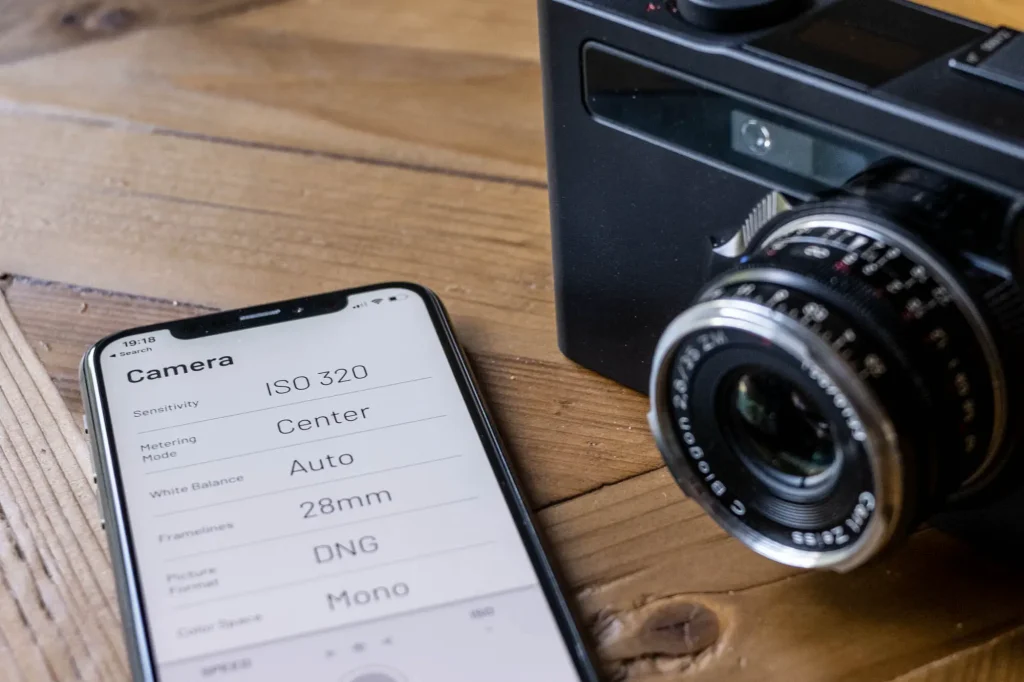
Imaging profile options
Pixii comes with a set of colour profiles preinstalled. Within the menu, it’s possible to change from more vivid colours to more subdued ones depending on the subject matter and the photographers taste.
If shooting in DNG, these colour profiles are embedded into the file so are reflected in editing software. They can then be dropped into the appropriate folder on the computer and accessed via editing software to switch between them if desired later.
What’s fairly unique about Pixii is that it will allow these profiles to be edited by the user via Adobe’s DNG profile editor (for eg) and uploaded back to the camera.
Picture format
Pixii takes photos in either JPG or DNG formats – though David’s focus has always been on providing the best DNGs rather than JPGs
Colour space
Pixii can be shot in either colour or black & white.
If you set Pixii to B&W and DNG, that’s what you get, monochrome DNGs that can’t be switched back to colour later.
And that’s pretty much your lot, apart from one other thing that will make this camera interesting to the geeks amongst us
It’s a ‘Software Camera’
When you plug Pixii into your computer, you can see the files on the camera’s memory – it has a developer interface that gives access to the whole computer system. I asked David about this, and he gave me a fairly long answer that I intend to pull apart as part of an interview article with him in the future. In short, he explained that before Pixii we just had a lot of fixed-function cameras, whereas Pixii can instead be seen as a platform for development.
So who’s Pixii for…
I think the thing that came as the biggest surprise to me was the sensor. It can be used at the higher ISOs, and to be fair – especially shooting B&W DNGs (just like the Leica M8) – it can be used quite creatively to good effect. But, like the M8, where it shines in terms of image quality is definitely at lowest ISO settings where the files are clean, nicely rendered and sharp.
In some ways, Pixii reminds me of the Sigma Foveon sensor cameras. Not in terms of the files or user experience directly, but more how Pixii defines itself for such a limited target audience.
With the Sigma cameras, the sacrifice is in the speed of use and high ISO performance, but in return, the reward is superb low ISO performance. They’re clunky to use, have a weird design, but provided they are used in a very specific way the right type of photographer will get a lot of using one.
Pixii is similar inasmuch as it defines itself for a very specific target audience, but different in who that audience is and what they want from a camera.
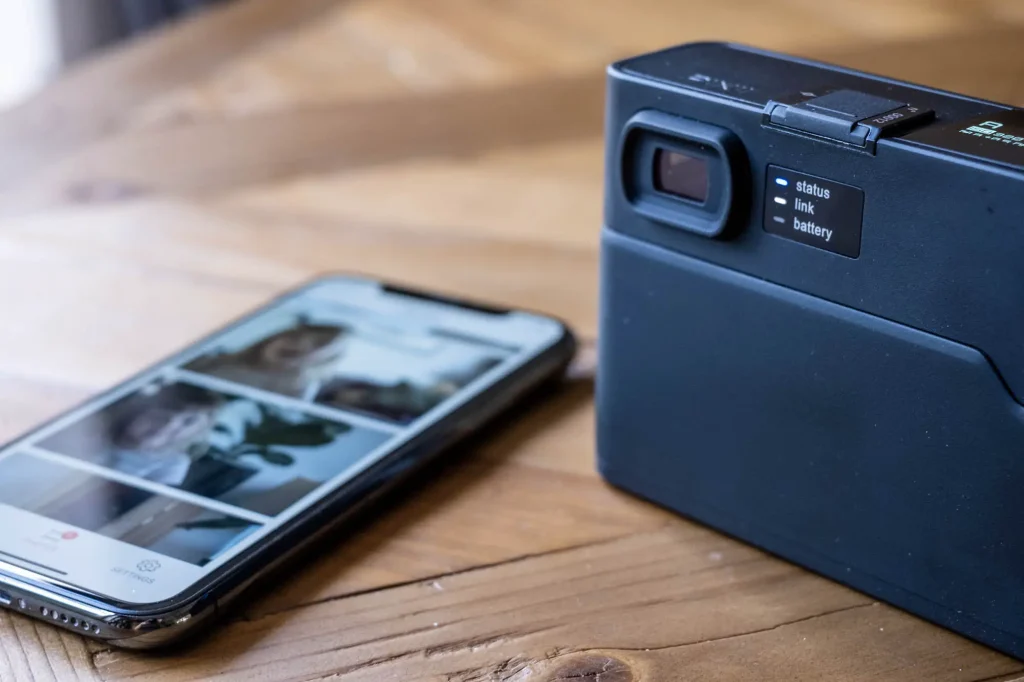
The Pixii use case
Yes, the files are great at low ISOs – at least provided you don’t mind only having 12 megapixels to play with. But the target audience here is less of one that is overly worried about ultimate image quality, and more of one that’s motivated by the very specific user experience Pixii Provides.
In fact, just as there are those of us who enjoy camera like the M8 for the limitation its potential image quality imposes, there will be some who find pleasure in using the Pixii for the same reasons. And the sort to get a kick out of it as a camera for that reason, will likely also be motivated by the enjoyment that can be had out of using a camera that doesn’t have billions of largely unnecessary bells and whistles.
Fundamentally, Pixii is aimed at photographers who shoot rangefinder cameras, maybe have a few M-Mount lenses, like the idea of shooting without a screen but are maybe are techy enough to also use a smartphone or iPad to edit, store and distribute their photos.
Pixii is for photographers who will appreciate the unusual combination of a modern techy, connected user experience, but with similar limitations to that which a film camera imposes.
It’s also aimed at techies – like David, its creator – who want to do things like tinker with colour profiles, or get involved with a camera platform that’s going to be built upon or have an interest in the fact that it has a developer interface that gives access to the whole computer system.
For me, it’s definitely the user experience. I have found immense satisfaction in the fact that Pixii crushes my options as a photographer to the bare minimum. But in doing so, it still provides the option for instant gratification and the ability to quickly share images online.
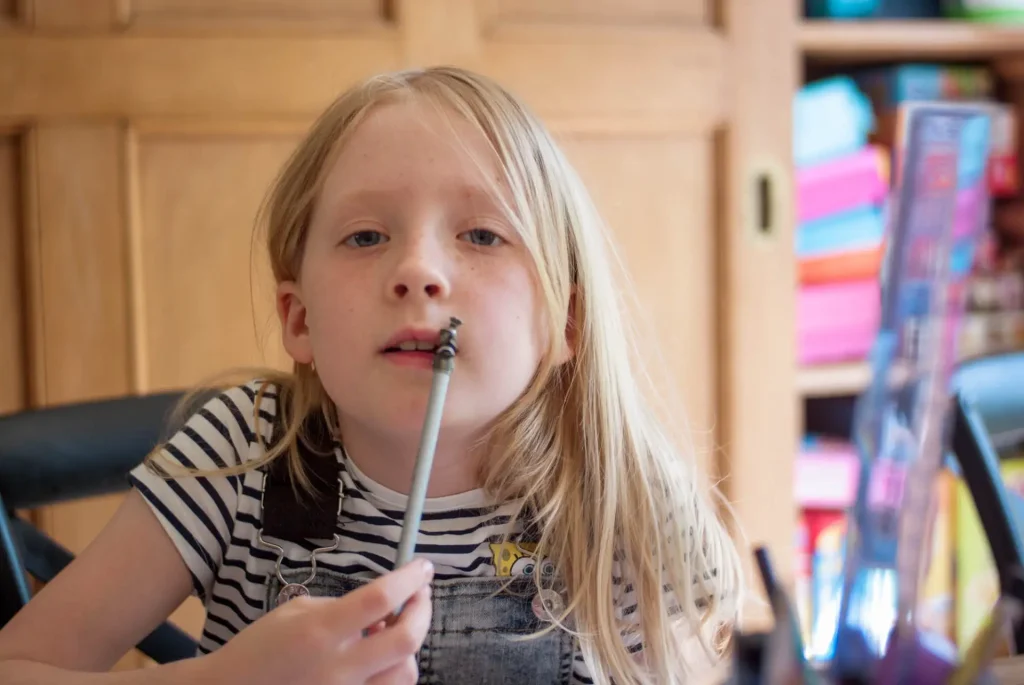
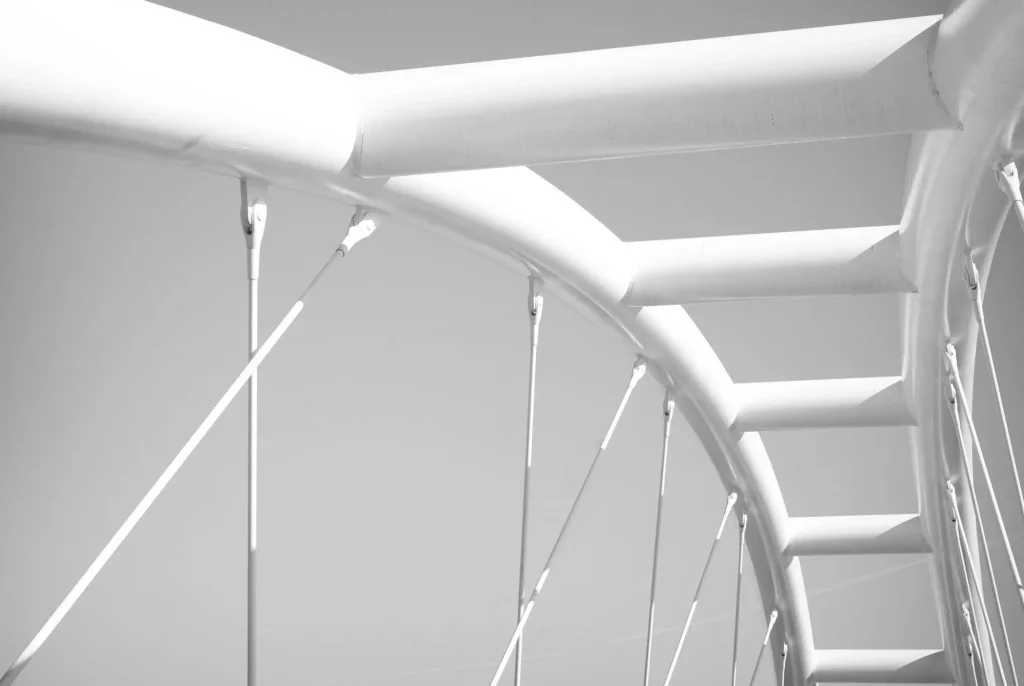
…and who’s Pixii not for
I am certain that the above few paragraphs will sound like crazy talk to a large percentage of people reading this? Why would anyone want to be so limited by their camera? Well, simply put, if you don’t know the answer to that question, this camera isn’t for you!
This camera isn’t for the mass market – it’s for a very small niche group of photographers, and if you aren’t one of those photographers then it’s quite likely it will seem like anything from a bit unusual, to absolute lunacy.
But for me, that’s what makes it interesting. That’s why I was so interested in the Fuji X-Pro3 when it was announced. It’s not for me, but it’s not for everyone and isn’t trying to be. Leica cameras, in general, are the same, Sigma cameras too. And now Pixii, but Pixii really wins the prize for smallness-of-niche. But that’s ok, in my books at least!
But of course, most of the digital photography community will recoil in horror. The majority of digital photographers have been drawn into the never-ending aspiration for more megapixels, better low light performance, better autofocus etc. etc. And for that reason, Pixii will no doubt be absolutely hammered in the comments section here, and especially on other websites when it starts to trickle out to the more mainstream photography press and review websites.
In fact, it’s quite a lot of cash too – not really a surprise for a first camera from a start-up company… But still, every time I post a picture of it on Instagram someone comments “For that money, I would buy a second hand Leica”, or “I might be interested if it had a full-frame sensor”. None of these people have tried or know anything about the camera, and frankly, even if they did, they would still probably buy a Leica or be more interested if it was full frame. Why? Because they are not the target audience! It won’t stop them winging though… because that’s just the way the photography world is when it comes to cameras…
Final thoughts (for now)
…But I like it. And I’m extremely excited by the prospect of something so unique and so niche as Pixii coming to market. I’m also extremely happy to have been a part of the latter stages of its production, and very much look forward to playing more with my Pixii, interviewing David about some of the deeper ideals behind this camera, and indeed sharing some of my thoughts in a future review.
As such, I’d like to thank David for inviting me to be a part of his journey. And David, one last thing: good luck with that Carapace of yours…
Pixii’s website can be found here
Share this post:
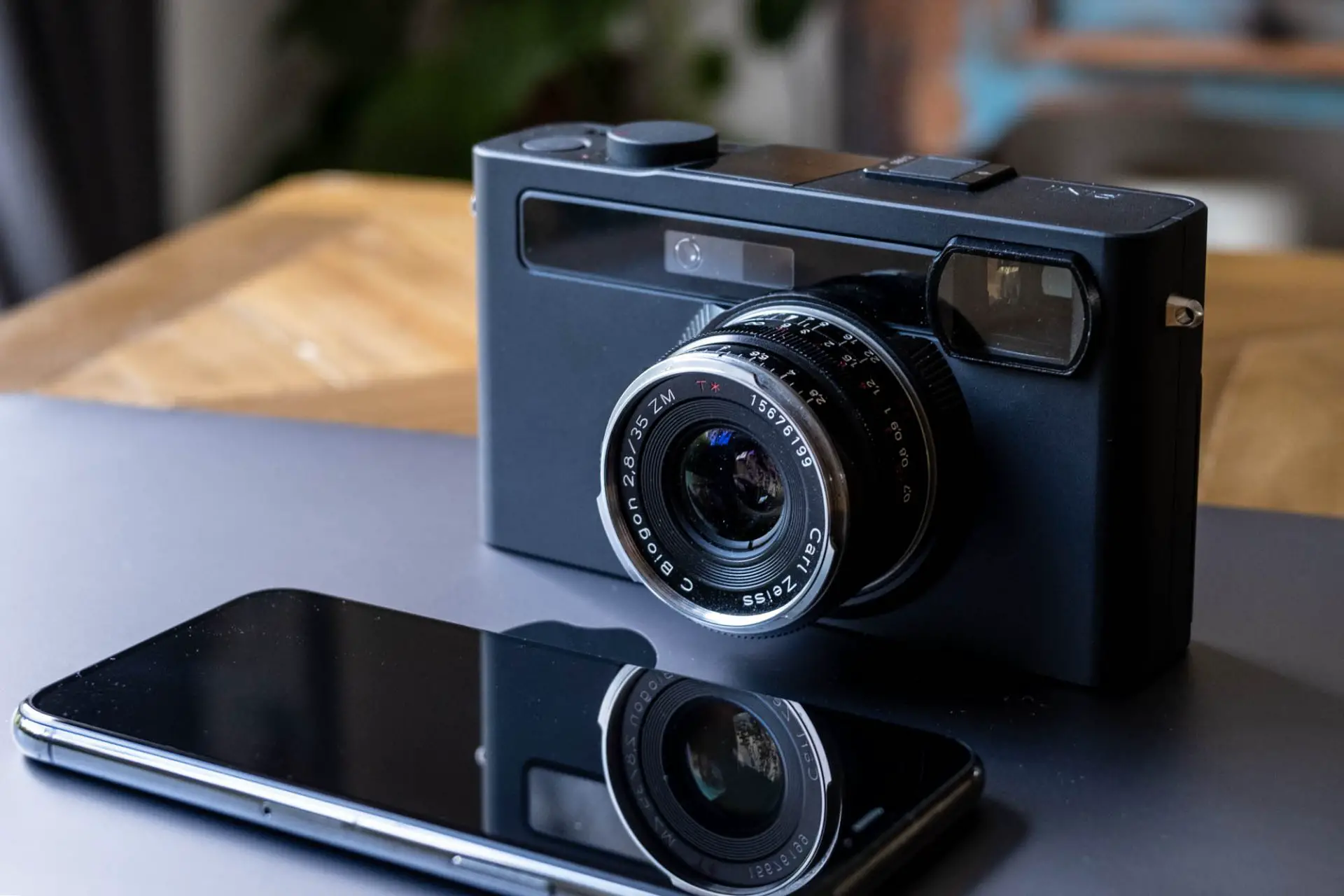








Comments
Malcolm Myers on Pixii (Model A1112) – A Primer into this New Digital Rangefinder Concept
Comment posted: 08/06/2020
Comment posted: 08/06/2020
Comment posted: 08/06/2020
Comment posted: 08/06/2020
Comment posted: 08/06/2020
Andy F on Pixii (Model A1112) – A Primer into this New Digital Rangefinder Concept
Comment posted: 08/06/2020
But it's €3500.
That is indeed “quite a lot of cash”. Oh well, guess I'll keep on dreaming.
Fphoto on Pixii (Model A1112) – A Primer into this New Digital Rangefinder Concept
Comment posted: 08/06/2020
Comment posted: 08/06/2020
Comment posted: 08/06/2020
christos1973 on Pixii (Model A1112) – A Primer into this New Digital Rangefinder Concept
Comment posted: 08/06/2020
Comment posted: 08/06/2020
Comment posted: 08/06/2020
Comment posted: 08/06/2020
Comment posted: 08/06/2020
Bob on Pixii (Model A1112) – A Primer into this New Digital Rangefinder Concept
Comment posted: 08/06/2020
Comment posted: 08/06/2020
Comment posted: 08/06/2020
Comment posted: 08/06/2020
Comment posted: 08/06/2020
Comment posted: 08/06/2020
TB on Pixii (Model A1112) – A Primer into this New Digital Rangefinder Concept
Comment posted: 08/06/2020
--> yours is already well in place Hamish so no need for luck when reading the comments!! :)
I really like the idea of this camera. I particularly like the mix between the limitations it imposes, and the ease of sharing and developing. Being able to edit the profiles is awesome for someone who would like to share directly to Instagram etc.
I imagine the pixel limitation is due to the global shutter?
Pieter Geloen on Pixii (Model A1112) – A Primer into this New Digital Rangefinder Concept
Comment posted: 08/06/2020
I really like the form factor, the non-existent screen, the simplicity of it all. I could even live with the smaller sensor. Even the price, if this would be your day to day camera.
Apart from the 'smaller' sensor, what worries me the most, is the smartphone-dependability...
What OS will be supported? Both Android and IOS? How long will the app be supported?
That's the biggest 'problem'I have with this.
Comment posted: 08/06/2020
Helge on Pixii (Model A1112) – A Primer into this New Digital Rangefinder Concept
Comment posted: 08/06/2020
Mr Liam H Baillie on Pixii (Model A1112) – A Primer into this New Digital Rangefinder Concept
Comment posted: 08/06/2020
Brian Sweeney on Pixii (Model A1112) – A Primer into this New Digital Rangefinder Concept
Comment posted: 08/06/2020
BUT- it is using 12/bits per pixel sampling, has "only" 12MPixels in the year 2020, and is APS-C similar to the Epson R-D1,
High-ISO performance is poor, probably for lack of a mechanical shutter. I've seen Datasheets for u43 CMOS sensors that show 10dB increase in noise when using the electronic shutter mode compared to using a mechanical shutter.
I would like to see a comparison between the images from this camera and the Leica M8 using RAW mode and M8RAW2DNG.
I've done a comparison between the M8 and M Monochrom.
https://cameraderie.org/threads/leica-m8-set-to-iso-ludicrous-speed.38677/
It's a great concept- but to be competitive with a camera in this price range, it needs to improve performance. It would be fun to write code for.
Comment posted: 08/06/2020
Comment posted: 08/06/2020
Alan Withington on Pixii (Model A1112) – A Primer into this New Digital Rangefinder Concept
Comment posted: 08/06/2020
Dave Walker on Pixii (Model A1112) – A Primer into this New Digital Rangefinder Concept
Comment posted: 08/06/2020
Danny on Pixii (Model A1112) – A Primer into this New Digital Rangefinder Concept
Comment posted: 08/06/2020
Comment posted: 08/06/2020
Paul Brown on Pixii (Model A1112) – A Primer into this New Digital Rangefinder Concept
Comment posted: 08/06/2020
Comment posted: 08/06/2020
Kevin on Pixii (Model A1112) – A Primer into this New Digital Rangefinder Concept
Comment posted: 08/06/2020
I'd like to hear more about the developer mode on this camera. I used to do hardware/firmware work back in the 90's and have been looking for an open source camera or at least one with significantly extensible software. Looking at this one I'm not sure what I would do yet. In the past I wanted this feature so I could hard set 90% or more of the options and then strip them out of the interface.
If this is a CCD, I'd really like to see what the hardware performance of something like ISO 32 is for studio work since the global shutter should sync flash. I've been waiting to see the full frame Foveon and if it can handle M lenses for the same reason.
Comment posted: 08/06/2020
JOHN LOCKWOOD on Pixii (Model A1112) – A Primer into this New Digital Rangefinder Concept
Comment posted: 08/06/2020
As someone who still shoots a Nikon D700 from time-to-time, I agree that 12MP is enough, in fact, superfluous for most uses. A couple of questions Hamish; you state it's a purely electronic camera, but I assume the manual focusing happens by the lens interacting with a cam still touching an arm in the camera, correct? I applaud their frame line choices. Perfect for a RF. Do the lines appear individually, specific to the lens that is mounted? And how 'bout weather sealing? I'm afraid. as an investor, I'd have to take a pass, but as a bystander, I applaud what they are attempting.
Comment posted: 08/06/2020
Huss on Pixii (Model A1112) – A Primer into this New Digital Rangefinder Concept
Comment posted: 08/06/2020
Thing is, Morgans are like that due to staying with their past heritage. Keeping the bloodline alive so to speak.
But this camera doesn't have any heritage to fall back on. It is a clean sheet design. I get it not having a screen. Minimal controls. Even using an ASP-C sensor - my Olympus and my Fuji use those, to great effect.
But I don't understand why the sensor is 12mp when 20 is the norm, not even cutting edge. And why "low" ISO starts at 320 and tops out at 1600. And why it cannot use removable memory cards that have been around for decades.
Obviously I am not in the market, but I could have been. It just seems so strange that they purposely seem to have made this camera as unattractive as possible to the vast majority of customers out there. It seems to be a cool little camera ruined by the most bizarre engineering/development decisions.
Comment posted: 08/06/2020
Jive on Pixii (Model A1112) – A Primer into this New Digital Rangefinder Concept
Comment posted: 08/06/2020
Comment posted: 08/06/2020
Paul on Pixii (Model A1112) – A Primer into this New Digital Rangefinder Concept
Comment posted: 08/06/2020
Noel Roque on Pixii (Model A1112) – A Primer into this New Digital Rangefinder Concept
Comment posted: 08/06/2020
First real-world preview of the upcoming PIXII APS-C rangefinder with Leica M-mount is out - Leica Rumors on Pixii (Model A1112) – A Primer into this New Digital Rangefinder Concept
Comment posted: 08/06/2020
Andrew Fildes on Pixii (Model A1112) – A Primer into this New Digital Rangefinder Concept
Comment posted: 09/06/2020
Comment posted: 09/06/2020
Laurence Kesterson on Pixii (Model A1112) – A Primer into this New Digital Rangefinder Concept
Comment posted: 09/06/2020
JL Williams on Pixii (Model A1112) – A Primer into this New Digital Rangefinder Concept
Comment posted: 09/06/2020
Me? Well, I bought an Epson R-D 1 when they first came out, still have it, and still use it occasionally, so APS-C doesn't worry me. And with my newer cameras I almost always shoot “connected” — everything gets streamed to my iPad, picked and prepped, posted online, then synced up to the raw files later. So I am pretty sure I “get” the user experience they're going for.
What I DON'T get — at least not from this review — is whether the experience is actually any good. Is the rangefinder/viewfinder pleasant to use? Is the feel of the shutter release button satisfying? Is the wireless workflow facile and bug-free? If, as you theorize, the Pixii is for photographers who enjoy having their options crushed (photo-masochists?) then the experience that's left behind after the crushing has to be top-notch. Is it?
Comment posted: 09/06/2020
Comment posted: 09/06/2020
Comment posted: 09/06/2020
Comment posted: 09/06/2020
Khürt Williams on Pixii (Model A1112) – A Primer into this New Digital Rangefinder Concept
Comment posted: 09/06/2020
Above Russ asked a few questions.
Robert on Pixii (Model A1112) – A Primer into this New Digital Rangefinder Concept
Comment posted: 09/06/2020
Jason Cha on Pixii (Model A1112) – A Primer into this New Digital Rangefinder Concept
Comment posted: 09/06/2020
I've always wanted another APS-C digital rangefinder, but one with a sensor more up to modern standards.
Looking at this though, I guess though I don't know what we really get over buying an old R-D1? 11 versus 6 megapixels, I guess.
But it seems like this is, just like the R-D1, a color = ISO800/1250 or lower, any higher go B&W, camera.
The Pixii is a 0.67x viewfinder, but has framelines for a 28mm lens (i.e., 42mm "full frame" equivalent)? Does that mean there's just a ton of space around the framelines or is the viewfinder just small? I guess I'm not sure why there aren't 24/25mm or even 21mm?
Given the magnification, it seems to me the rangefinder base is likely not more accurate than an R-D1?
The cost is obviously what it is for a niche product.
I guess having the connectivity through the app is nice as well as being able to tweak settings in camera. I guess in that regard, I'm not one of the targeted users, as my workflow always include importing RAW into a laptop/computer.
Just if I want to go to a simpler, film-like experience, and I'm stuck with APS-C and 28mm and longer framelines in the viewfinder, it's hard for me to want this product over a R-D1.
ライカMマウントレンジファインダーカメラPIXII A1112の実機プレビュー公開!(35mmc) | Dmaniax.com on Pixii (Model A1112) – A Primer into this New Digital Rangefinder Concept
Comment posted: 09/06/2020
Terry B on Pixii (Model A1112) – A Primer into this New Digital Rangefinder Concept
Comment posted: 09/06/2020
I suspect that the first thing most would have wanted to know was the price, and I took a deep breath when I saw it, close on 3,500€. After learning this things went down hill. The camera has a cold shoe, but no evidence of a PC flash connection. So it seems no flash capability, then? There's a reference to its being USB, so I'm guessing this is the connection for pc connection.
Then we come to its spec. I'm not all all fazed by only having 12mp as one of my favourite digital cameras of all time, the Sony R1, has only 10mp, but it produces, for me, some of the best digital images of any camera that I've owned. But the admitted poor performance at the higher ISO settings (grammatically using "higher" has to mean more than one setting) is very limiting indeed.
Sadly, having an APS-C sensor isn't really compatible with traditional film focal lengths for 35mm cameras, and it makes a bit of a nonsense of the framelines in the viewfinder. (Iwonder if it would have been possible to incorporate equivalent FoV framelines for whatever actual focal length lens was attached?)
Finally, the reliance on a smartphone app to adjust settings. The camera has been pared-down as a design ethic but in doing so most functionality has simply been transperred to an app. I don't see how carrying around a smartphone to make necessary changes to settings on the fly is any easier than doing it on the camera. (Sony menus aside!)
For such an interesting product it is so outdated regarding its spec but, as others have remarked, there will be a number of photographers for whom this set up/camera will have some meaning, so it will be interesting to see just how much traction it generates.
Comment posted: 09/06/2020
Comment posted: 09/06/2020
Comment posted: 09/06/2020
Comment posted: 09/06/2020
David Bateman on Pixii (Model A1112) – A Primer into this New Digital Rangefinder Concept
Comment posted: 09/06/2020
The only change I would like to see is the addition of a micro SD card slot for image storage. As they are so cheap due to cellphones, I use them basically as single use drives for long term storage of my images. That would be a nice addition as then don't have to always off load DNG files to my phone.
Zvatopluk on Pixii (Model A1112) – A Primer into this New Digital Rangefinder Concept
Comment posted: 09/06/2020
I appreciate the effort of the Pixii-team to come up with an all new rangefinder camera! And a pretty sexy and unique looking one at that. After all, how many small scale digital camera manufacturers with no ties to any mainstream camera maker do we know of currently? And how many of them actually take the financially risky route of building a camera around a real optical rangefinder all by themselves? This is a brave undertaking and deserves all the respect! Especially, given the challenges of price pressure and technology in low volume production.
Comparing the Pixii side by side to a Leica M in my eyes turns out much more as a compliment for Pixii than an equal fight. Leica is a big player compared to tiny Pixii and can profit from decades of experience, refined tooling and successful luxury brand shaping. So there is no point in trying to set the digital Leica M, the benchmark in rangefinders, equal with Pixiis first product.
Looking at the alternatives as they are right now: What if I actually want a digital true rangefinder, which is not a Leica? Because a rangefinder is the most enjoyable type of camera for quite some people, including myself. Which choices are there? There used to be some choice back in the film-days but not anymore. Is anyone here really opposed to the concept of competition? I mean, just look at the rising prices of used Leica M8 - this is a ridiculously inflated market for lack of alternatives.
I also don’t see how „less than a Leica“ can be a consideration. If you want a Leica, buy a Leica. Let‘s call it different than Leica, which it quite obviously is, and be glad about the new variety of true rangefinders. The Pixiis whole concept is about being simplistic with an own approach so it's a feature, not a drawback. It actually seems to be a fully usable and enjoyabel rangefinder camera and I see a good chance for the Pixii to get out of the way while shooting – which is top on my priority list for any camera.
I own an R-D1 (with a pretty useless screen, which can be folded away) and an M8 (on which the screen went bust years ago) and i love both dearly. Their limititations and CCD don't render them useless by todays standards – quite the opposite: They make them the most enjoyable digital cameras to use for me. And it doesn't actually matter all that much that they have cropped sensors. I‘m delighted to see some players opening up the playing field of simplistic no-screen rangefinder cameras intended for manual use. What I don't need - and surely I'm not the only one - is pixel wars. Silly large files is actually one of the main reasons for me to stay away from any 20 mp camera. Pixii's aproach therefore gets my full approval. Keep it going!
And as for the price point: Lets stay true and look at the new prices only: Any new Leica M is substantially more expensive and yet they sell like hot cakes (which is good for all of us in the second hand market ;). With that in mind and the fact that Pixii are even smaller a company I don't see, how this low volume production rangefinder camera is overpriced in any way. It's by no means a mass market product and it is a first product on top of that. A future collectible even.
Let’s also bear in mind: The average camera buyer has been conditioned by years of industry progress to always expect the feature-list to grow in order to feel satisfied when spending top dollar. But my bold claim is, that judgements derived purely from logics of the market may not reflect each users true needs, even if they believe so at first ;) I for one sure don't need nor want a 40 mp rangefinder camera. And I also don't want "clean" files up to ISO 50000 or however much, that's just plain boring. The Pixii therefore seems rather intriguing to me.
Comment posted: 09/06/2020
Taffy on Pixii (Model A1112) – A Primer into this New Digital Rangefinder Concept
Comment posted: 09/06/2020
I think this is one of those cameras that had the Bessa L appeal - while other options are available, the simplicity might be the draw. I can imagine this with a Snapshot Skopar 21 or the 35 Nokton Classic as a nice combo :)
Comment posted: 09/06/2020
Huss on Pixii (Model A1112) – A Primer into this New Digital Rangefinder Concept
Comment posted: 09/06/2020
The cheapest new 1 inch center camera is a Panasonic Lumix for $390 with a 20mp sensor.
There is a Vivitar F126 digicam that goes for $25 new. Even that thing has a 14mp sensor!
Where on earth did Pixiii find the sensor that they are using, that starts at iso 320, tops out at 1600? Did they time travel back to 2005 and buy up stock?
I'm not asking for FF w/ 47mp. Not even leading edge. But it seems, how shall I put it, interesting that they are asking $3500 for something like this.
Comment posted: 09/06/2020
Comment posted: 09/06/2020
Comment posted: 09/06/2020
Brian Sweeney on Pixii (Model A1112) – A Primer into this New Digital Rangefinder Concept
Comment posted: 09/06/2020
I've been reading up on some of the newer CMOS sensors now available. I don't know which sensor was used in this camera.
But strides in saturation count and low noise in CMOS is incredible. Fairchild offers 12MPixel CMOS sensors in APS-C, in both Monochrome and Color. Getting low noise, high-saturation count, and a global shutter all in one package- that is not easy. I'd rather have 12MPixels of images that are not clipped than blown-highlights or banding.
If Pixii is going to go this far, they might as well offer a monochrome camera as well.
Comment posted: 09/06/2020
Chris Andreyo on Pixii (Model A1112) – A Primer into this New Digital Rangefinder Concept
Comment posted: 09/06/2020
I like the idea of no screen also, the urge to chimp is removed by default :)
The design looks classy (as if apple decided to try and make a rangefinder one day).
Aside from the M10 series, all other digital Leica’s needs their memory cards removed to transfer files (I don’t count the WiFi sad cards as optimal solution for transfer). Since there are so many that edit their photos on iPads and phones, it’s great to see device tethering was thought of from the beginning.
There is so much more to a camera, then it’s sensor size and megapixels, this camera scores high in my book, on those other areas.
I hope they sell quite a few and this becomes successful for them.
I’m interested to see what classic film aps-c lenses I could find and convert specifically for usage with this camera. The industar-69 would make a lovely 42mm F/2.8 equivalent lens if some simple RF coupling was added to the existing mechanics. It would be a pocketable RF solution with FOV that matches the human eye. Other lenses adapted over would be smaller then their FF equivalents as well. The Fuji X MF lenses made by Meike and 7A could also be adapted over, by adding RF coupling. There is some real promise to have a small, pocketable RF system with this camera in theory.
Comment posted: 09/06/2020
Comment posted: 09/06/2020
Comment posted: 09/06/2020
Huss on Pixii (Model A1112) – A Primer into this New Digital Rangefinder Concept
Comment posted: 10/06/2020
Also... this camera would be so cool as a film camera... Currently there is only mfg making film RFs..
MitchisCharloe on Pixii (Model A1112) – A Primer into this New Digital Rangefinder Concept
Comment posted: 10/06/2020
Chris Andreyo on Pixii (Model A1112) – A Primer into this New Digital Rangefinder Concept
Comment posted: 10/06/2020
The sloped RF cam we could do, Ive got an Industar- 69 here I’m going to have a play with adding some coupling to now. Ironically, it’s already been modified for the correct registration distance for Leica, I can’t remember if it was `Brian’s or `Hamish’s guide to doing this, but was probably the second lens I did after a Jupiter 3 re-shimming many moons ago.
Thank you Brian for recommend a Wollenstack 35mm f/2, I shall try and pick one up off eBay. I have a sacrificial J12 M39 already I can modify for this. Now just need to find a half frame 50mm, to work as the 75mm equiv.
The 7A 35mm f/1.2 for FX would make a great adaptation also I think. Maybe the J12 LTM could be used for this also, if I bore out the centre. Then this camera would have a 50mm FF equiv sonnar-like lens. Can’t go wrong with that :)
Justin on Pixii (Model A1112) – A Primer into this New Digital Rangefinder Concept
Comment posted: 10/06/2020
Comment posted: 10/06/2020
Brian Sweeney on Pixii (Model A1112) – A Primer into this New Digital Rangefinder Concept
Comment posted: 11/06/2020
Looks like someone read one of my old posts about the Fastax 35/2.
There's a great line from Plankton on SpongeBob, "I have TWO Wollensak Raptar 35mm F2 lenses and no one to share them with".
Once the delays in International Shipping end, I'll send you my spare. Just found it in one of my better parts bins. I use a Wollensak Lens Cap like the one in the auction for my Summarit.
I converted a number of SLR lenses for my Leica M8- A bit easier converting lenses for a crop sensor, don't have to be careful of vignetting from the longer light path down the tube used for an RF Cam.
I'll be interested in learning more about this camera. Would love to know which sensor was used in it, and if the data sheet is available. I miss that about Kodak sensors- full data sheets available. CMOSIS makes their's available for those sold directly by the company.
Raphael on Pixii (Model A1112) – A Primer into this New Digital Rangefinder Concept
Comment posted: 12/06/2020
However, most people want a diary camera that has a 28mm or 35mm equivalent lens. That's the most significant drawback of the Pixii. Good thing the Fujifilm X100, Leica Q, and Ricoh GR already exist! However, the relatively fewer people who have been begging for a compact camera with a normal 40-50mm-e lens will be very glad. They'll be even happier if the manual focusing on the X100 wasn't up to snuff for them. But if you've been hoping for a Ricoh GR with a built-in optical viewfinder (like me), you're still out of luck. I could have gotten by using a somewhat slow, but compact, Voigtländer 21mm f/3.5 Color-Skopar on the Pixii, but the lack of framelines in the viewfinder is sadly a deal breaker for me. I hope Pixii makes a wide angle version soon, because accessory viewfinders are not my thing. I'm not holding my breath, though, because few people will be happy with the lens options in the 21mm and 24mm range. They're either slow and small or fast and gigantic. Maybe that's why the viewfinder only supports 28mm (42mm-e). Things would have been completely different if the Pixii was full frame, it's not even funny. =(
If I wasn't hung up on diary cameras having fast, compact moderate wides, I would not mind using some of these other lenses on the Pixii, either for fun or for keeps:
- Zeiss ZM 28mm f/2.8 (42mm-e) — Good size, but a stop slower than it should be. Thanks, 1.5x crop!
- Leica or Voigtländer 28mm f/2 (42mm-e) — On the big side.
- MS Optics 28mm f/2 Apoqualia-G (42mm-e) — Tiny, but the image quality and ergonomics are not for me.
- Leica or 7Artisans 28mm f/1.4 (42mm-e) — Probably too big to put up with, lol.
- Voigtländer 35mm f/2 Ultron vintage line (52mm-e) — That would be nice!
- Voigtländer 35mm f/1.4 Nokton II (52mm-e) — Ditto.
- Leica or Zeiss 35mm f/1.4 (52mm-e) — Meh, more big ones.
What I'd like to know is whether Pixii will enter the lens market. To make an M-mount APS-C sensor camera truly appealing, there have to be dedicated lenses. A compact 28mm f/2 and 35mm f/1.4. If they ever make a wide angle camera, they'd need compact 18mm f/2 or f/2.8 and 23mm f/2 lenses. There's a lot of exciting potential here if this one camera body is just the beginning.
Samuel on Pixii (Model A1112) – A Primer into this New Digital Rangefinder Concept
Comment posted: 13/06/2020
Benson on Pixii (Model A1112) – A Primer into this New Digital Rangefinder Concept
Comment posted: 06/07/2020
Comment posted: 06/07/2020
Pixii Connected Digital Rangefinder Available to Order! - 35mmc on Pixii (Model A1112) – A Primer into this New Digital Rangefinder Concept
Comment posted: 06/07/2020
James Henriot on Pixii (Model A1112) – A Primer into this New Digital Rangefinder Concept
Comment posted: 06/07/2020
Comment posted: 06/07/2020
Luis Carballo on Pixii (Model A1112) – A Primer into this New Digital Rangefinder Concept
Comment posted: 06/07/2020
Should I buy one? No at this moment. The price is excessive. I bought recently a Leica M_P typ 240 with less than 5.000 shots for 3.400€. Maybe I could buy one to play, and because I like the concept and design, but I feel expensive for the experience.
I wish all the team good luck with the project, and hope you have de feedback you wait.
I see this project, like a modern Unique concept that uses the most sophisticated focus system like the Leica cameras, and allows to use the most quality lens of the world, but a price around 1.500€ to catch more potential buyers.
Matt on Pixii (Model A1112) – A Primer into this New Digital Rangefinder Concept
Comment posted: 06/07/2020
I like the way that Pixii is thinking, but I don't think any camera company has figured out what photographers want to be analog and what they want to remain digital, or tech-based. I think the digital rangefinder could deliver on those demands, but it has yet to be executed very well, and I think that's because rangefinders have yet to move beyond fixed magnification viewfinders.
What about a dual-mag rangefinder? I'd love to be able to shoot the same rangefinder body at .67x and at 1.0x or 1.3x. If Leica had dual mag finders then the as-new price of their camera bodies would really be worth it. You could have one body and shoot any lens in any situation (like every other camera manufacturer), but the important aspects of the shooting experience (the seeing) would all be analog and uncluttered.
Sorry, that was a bit off-topic. Glad Pixii is thinking outside of the box and keeping the rangefinder alive.
Leica M10-P Review - A Brilliantly Underwhelming Digital Rangefinder on Pixii (Model A1112) – A Primer into this New Digital Rangefinder Concept
Comment posted: 07/07/2020
Tom Pierce on Pixii (Model A1112) – A Primer into this New Digital Rangefinder Concept
Comment posted: 08/07/2020
Rightly expressed, a CCD or Foveon sensor would have been a delight, clearly in step with this initial offering, but then again, the file size for the later may have been an encumbrance on the limits of the current processor or memory capacity. Reminds me of the genius behind small swiss watch ateliers-the rogue artesian pushing boundaries. Perhaps photography has evolved to where it doesn't need heightened digital perfection or perhaps even images, but the perpetuation of a good story - particularly a memorable, enduring internal dialogue for the purchaser.
What an awesome achievement-to create and manufacture a very solid, minimalist electronic camera, tailored towards social media and cloud storage, may your efforts continue to lead to success. I will be very interested in following this camera's future and reading the full review.
Pixiijev 12-milimetarski daljinski upravljač s M-mountom sada je dostupan za naručivanje: Digital Photo Review - Vijesti s kamere on Pixii (Model A1112) – A Primer into this New Digital Rangefinder Concept
Comment posted: 08/07/2020
【一日一好物】新品牌 Pixii 單反 Rangefinder相機終於開售 - 好想擁有 on Pixii (Model A1112) – A Primer into this New Digital Rangefinder Concept
Comment posted: 08/07/2020
Steve on Pixii (Model A1112) – A Primer into this New Digital Rangefinder Concept
Comment posted: 08/07/2020
Agent of Reason on Pixii (Model A1112) – A Primer into this New Digital Rangefinder Concept
Comment posted: 09/07/2020
I'll save everyone 90% of the price.. buy a used 12MP Oly or Fuji that looks retro. Paint the rear screen black. Glue the rear screen down. Insert a 4 or 8 GB card. Glue the card door. Cover up the branding. Stick a label with a chic name of your choice. Done.
Your welcome.
La fotocamera Blue Ocean Strategy - STRTGY on Pixii (Model A1112) – A Primer into this New Digital Rangefinder Concept
Comment posted: 27/07/2020
J. Bec on Pixii (Model A1112) – A Primer into this New Digital Rangefinder Concept
Comment posted: 31/12/2020
I am indeed into this niche market of having a non intrusive camera, nice engineering piece of equipment compatible with top quality lenses like Leitz, Zeiss and Voigtlander.
In term of performances, no doubt, the M240 is way better than the old RD1, but the RD1 had a « je ne sais quoi » close to the feeling of using an analogic camera and looking as such ... Its look enabled me to take pictures in some remote places without being scared of being robbed such if I were using a bulky Nikon or a shinny Leica. I have never really cared of it’s 6 Mpx. Believe me 80% of my pictures are as good with the M240 than the RD1. It’s limitations were more about the ISO performance (the remaining 20%) where I indeed missed some shots in low light conditions.
Nevertheless, putting the price aside, one remaining point make me consider to go back to the spirit of the RD1/Pixii, Having a 50mm/f2 equivalent will pushed me to fairly bulky lenses such as a summilux 35mm to have a similar DOF. For me the compactness of the Pixii would suffer of this combo - such as the RD1 was.
Appart for that point I can only salute this initiative, and I am still thinking of throwing away all my gears to come back to the simplicity of this system. The process of composition is as important as the result, getting rid of all the superfluous electronic features is, for some niche-users as I am, a good way to enhance the pleasure of taking the pictures.
Thanks for this nice article !
Comment posted: 31/12/2020
WW on Pixii (Model A1112) – A Primer into this New Digital Rangefinder Concept
Comment posted: 20/06/2021
Comment posted: 20/06/2021
Huss on Pixii (Model A1112) – A Primer into this New Digital Rangefinder Concept
Comment posted: 13/10/2021
Please review!